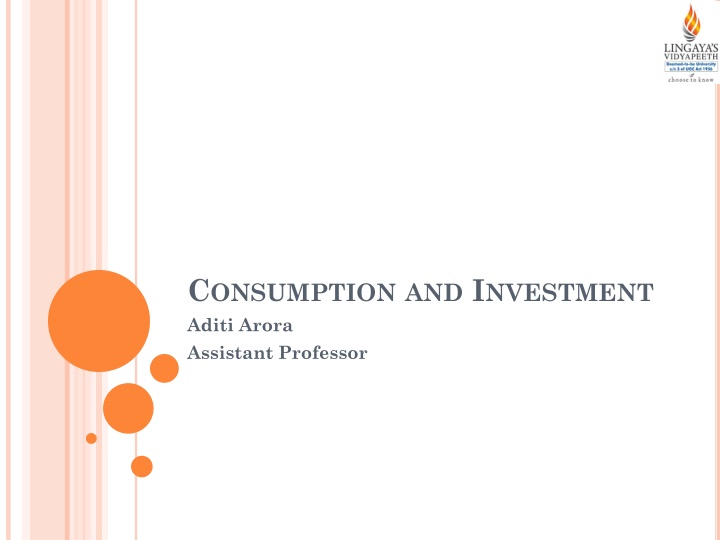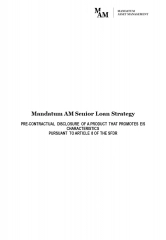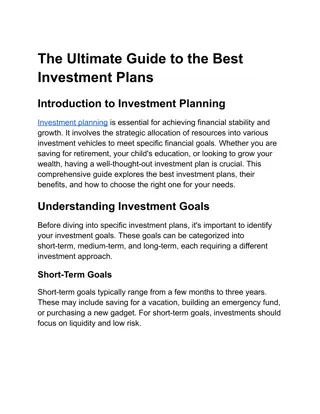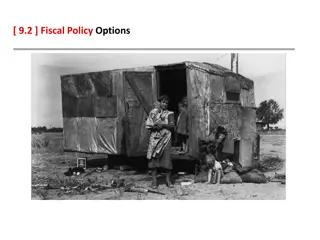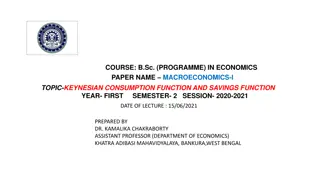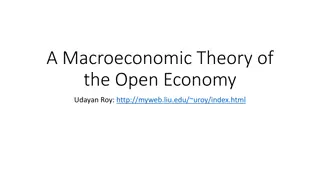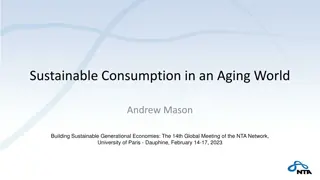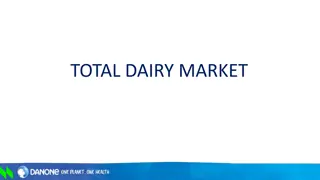Consumption, Saving, and Investment in Economics
Consumption in macroeconomics refers to total spending on consumer goods and services, while saving is the act of abstaining from consumption. Investment involves creating capital goods and acquiring financial assets. Engle's Law states that the proportion spent on necessities decreases with income. Marginal Propensity to Save and Marginal Propensity to Consume play crucial roles in economic analysis.
Download Presentation

Please find below an Image/Link to download the presentation.
The content on the website is provided AS IS for your information and personal use only. It may not be sold, licensed, or shared on other websites without obtaining consent from the author.If you encounter any issues during the download, it is possible that the publisher has removed the file from their server.
You are allowed to download the files provided on this website for personal or commercial use, subject to the condition that they are used lawfully. All files are the property of their respective owners.
The content on the website is provided AS IS for your information and personal use only. It may not be sold, licensed, or shared on other websites without obtaining consent from the author.
E N D
Presentation Transcript
CONSUMPTION AND INVESTMENT Aditi Arora Assistant Professor
CONSUMPTION In macro economics, the total spending by all individuals, firms, institutions, etc. on consumer goods and services is called consumption. Strictly speaking consumption should apply only to those goods and services that are totally used, enjoyed or eaten up within the reference period. However, the convention is to include under consumption the expenditures on short life consumer durables such as furniture, television etc.(and even automobiles but not houses).
CONSUMPTION FUNCTION Consumption Function is the schedule giving the relationship between consumption and disposable income. Disposable Income: In the case of an individual it is the income left with him after paying taxes and defraying his prior commitments.ie. The portion that he is free to spend on items of his(fresh) choice. But in the case of estimation of Disposable Income at macro level, taxes and other such inter sectoral transfer payments are not taken into reckoning.
ENGLES LAW Engle s law is that the proportion of amount spent on food and other necessities decreases as the level of disposable income increases. Marginal Propensity to Consume: Change in Consumption/ Change in Disposable Income. Consumption Function is upward sloping with Disposable income on X-axis and Consumption on the Y axis (downward sloping in case prices are taken on Y-axis and consumption on X axis).
SAVING Saving : The act of abstaining from consumption. Some economists prefer to call it differed consumption. At the macro level saving is the difference between National product and the aggregate of individuals consumptions plus payments towards national and international prior commitments. As income levels increases the willingness and ability to save increases
SAVING Marginal Propensity to Save: Change in savings/ Change in disposable Income. Motives for Saving: i) for investing either in physical or financial assets that yield regular flow of returns- incomes or services over years. ii) As safety/ cushion measure to meet unforeseen exigencies. Here the savings are held in cash or in the form of assets with very high degree of liquidity or as gold with very low or no flow of returns
INVESTMENT Investing refer to the process of creation of Capital goods, acquiring financial assets, erecting civil structure, producing machinery, equipments and gathering inventories. Though investments in financial assets do not directly result in creation any physical assets, they do indirectly facilitate their creation( by entrepreneurs) and earn a flow of returns. Similarly inventories are not assets in the strict sense, but a requisite during the period of creation of capital assets.
INVESTMENT FUNCTION Investment ( Investment spending): the total amount spent on capital goods during the reference period. Cost of Capital: The premium that people would like to be paid for foregoing their present consumption and for investing their current savings in investments. This is usually reflected in the interests earned. Investment Function: Schedule showing the level of investments and the cost of capital. If the cost capital is high the entrepreneurs would have less incentive to take risks and invest
ACTUAL INVESTMENT AND INVESTMENT DEMAND Actual investment is the amount actually spent in the reference period on acquiring new plants, equipments etc. including inventories thought required. Investment demand is defined as the amount required for acquiring capital goods planned ie. Deemed necessary to carry out the normal production( business) activities.
AGGREGATE SUPPLY AND AGGREGATE DEMAND Aggregate Supply(AS) and Aggregate Demand (AD) are the two terms coined by Keynes to facilitate his macro economic analysis Their connotations are as in the following: AS: Total of quantities of all goods and services that producers are willing to supply during the reference period. Its value is usually measured in terms the prevailing market prices. AD: The total quantity of goods and services willingly bought by customers at the given price level during the reference period. Its value is usually measured in terms of the prevailing market prices. AD= C+I+G+T where C, I, G, stand respectively for the total value of consumption , investment items demanded by individuals, firms, government and T is the net inflow of earnings from foreign trade.
MACRO ECONOMIC EQUILIBRIUM Macro Economic equilibrium is arrived when the aggregate supply and aggregate demand are equal to one another. However in many instances, as observed by Keynes, the macro economic equilibrium is found attained at a level much lower than what is desired for maintaining full employment. Consequently unemployment is found to persists for fairly long periods.
GOVERNMENT SPENDING The need for government to intervene in the macro economic management with large quantum's of spending has now come to be accepted by all. But it has to by way of supplementing private investments rather than as additions to the private consumptions. Government investments should be directed to sectors where the multiplier effects are high.
GOVERNMENT SPENDING But at the same time it is also necessary to caliber the newly infused demands in such a way that they do not lead to inflation .That would be counter productive. Investment Multiplier (IM)= changes in national product/changes in investments
